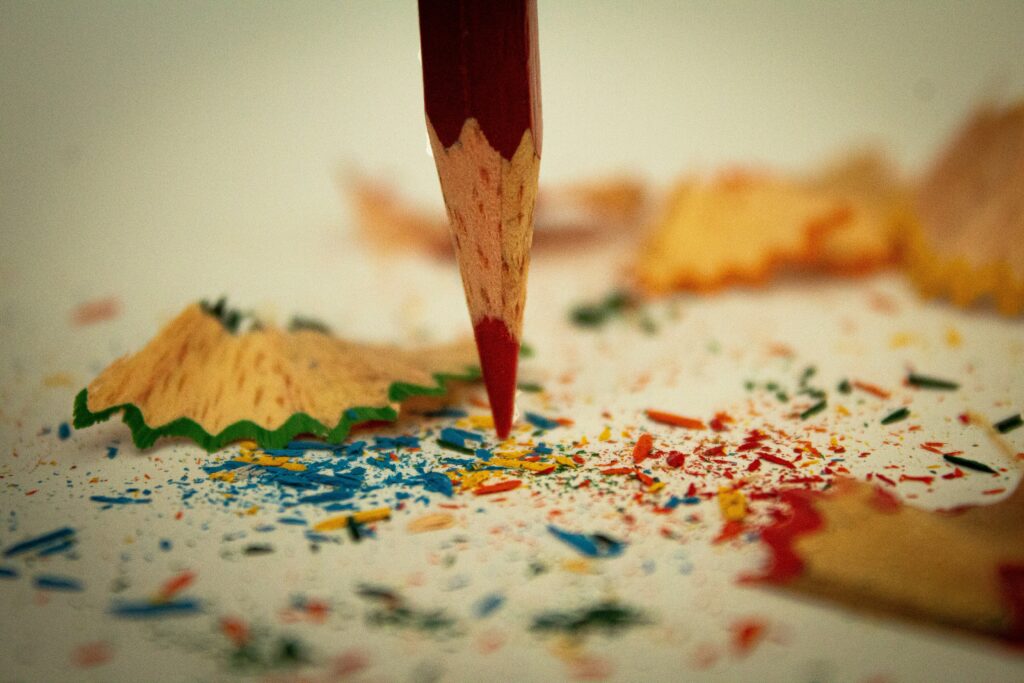Creative therapy
Creative Therapy is a form of therapy that uses creative and artistic modes of expression — such as drawing, painting, movement, music, drama, or writing — to explore and heal emotions, thoughts, and experiences. The focus is not on the aesthetic outcome of the art but on the internal process that helps a person connect with their feelings, body, and inner world.
Unlike traditional talk-based therapy, creative therapy offers a different, often deeper and more intuitive perspective for addressing topics that are difficult to express verbally. It provides a safe and supportive space for expressing and transforming inner states.

When can it help?
Creative therapy can be beneficial in a wide range of conditions and life situations, such as:
When emotions are difficult to express or understand in words
In cases of anxiety, depression, or burnout
For processing traumatic experiences (e.g., childhood trauma, experiences of violence, loss)
To strengthen self-esteem and self-confidence
To release stress and inner tension
For becoming aware of relationship patterns and difficulties
For supporting self-development and finding inner balance
To support emotional development in children and adolescents
For supporting children with neurological differences (e.g., autism spectrum disorder, ADHD)
How does it work?
Creative therapy creates a space where a person can express what is difficult or painful to put into words. Various creative techniques are used in therapy, such as drawing, clay work, movement, voice work, listening to and creating music, improvisational play, or writing.
The therapeutic activity helps the individual access subconscious layers, release suppressed emotions, and create new internal meanings. The therapist helps guide the process, offering a safe framework and interpretation if needed, but does not directly lead the creative process. It is important that the person moves at their own pace and feels free in their expression.
Creative therapy can be done individually, in pairs, or in groups. No artistic skills or prior experience are required—everyone’s inner creativity is enough.
Contraindications
Although creative therapy is highly flexible and versatile, there are certain situations where special attention or a specialized approach is required. Creative therapy may not be suitable:
During an acute psychotic episode (requires psychiatric stabilization first)
When a person is unwilling to engage at all or refuses contact with the therapist
In cases of severe intellectual disability, where understanding or participating in the creative process is not possible
In the presence of strong dissociation (a gradual, trauma-informed approach is needed)
When specific creative tools themselves may act as trauma triggers (e.g., certain music or colors)
Useful to know
Creative therapy does not require artistic talent or knowledge from the participant – what matters is the willingness to explore and express one’s inner world. Sometimes, the creative process may bring up strong feelings or memories that need a safe space to be held and processed. The therapist is there to support this and help integrate the experience.
The therapy can be playful, liberating, deeply moving, or calming – each session is unique, depending on the person’s current state and needs. The results may not be immediate, but over time, creative therapy can lead to profound inner shifts and emotional release. For many, this practice helps develop new ways of listening to themselves and staying connected to their own needs.
Interesting facts from science
Research has shown that creative activity activates the right hemisphere of the brain, which is associated with emotions, images, and subconscious processing. This helps to process information in ways that purely rational thinking cannot. Studies have confirmed that, for example, art-based therapy can help alleviate PTSD (post-traumatic stress disorder) symptoms, especially in children and individuals affected by war trauma.
It has also been found that creative expression enhances self-awareness, helps reduce anxiety, and improves mood. Combining movement and music directly affects the autonomic nervous system, helping the body and mind return to balance. Therefore, creative therapy is not just an emotional support—it is also a neurobiologically effective intervention that helps restore inner stability.
Sources
Home – New
https://baat.org/
